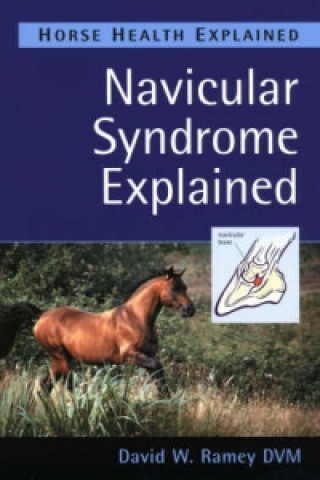
Kód: 05016924
Navicular Syndrome Explained
Autor David W. Ramey
Navicular Syndrome is one of the most common, and sometimes one of the most frustrating causes of lameness in performance horses. Navicular lameness is caused by the pain associated with the compression of an inflamed bone and rel ... celý popis
- Jazyk:
 Angličtina
Angličtina - Vazba: Brožovaná
- Počet stran: 96
Nakladatelství: Kenilworth Press, 2002
- Více informací o knize

593 Kč
Dostupnost:
50 % šance Máme informaci, že by titul mohl být dostupný. Na základě vaší objednávky se ho pokusíme do 6 týdnů zajistit.
Máme informaci, že by titul mohl být dostupný. Na základě vaší objednávky se ho pokusíme do 6 týdnů zajistit.Prohledáme celý svět
Mohlo by se vám také líbit
-

Equine Embryo Transfer
2169 Kč -

Equine Locomotion
3526 Kč -

Equine Osteopathy
1014 Kč -

Osteopathy and the Treatment of Horses
2305 Kč -

Lion at Bay
547 Kč -

Hezbollah
638 Kč -

Romeo and Juliet
102 Kč
Dárkový poukaz: Radost zaručena
- Darujte poukaz v libovolné hodnotě a my se postaráme o zbytek.
- Poukaz se vztahuje na celou naši nabídku.
- Elektronický poukaz vytisknete z e-mailu a můžete ihned darovat.
- Platnost poukazu je 12 měsíců od data vystavení.
Informovat o naskladnění knihy
Zadejte do formuláře e-mailovou adresu a jakmile knihu naskladníme, zašleme vám o tom zprávu. Pohlídáme vše za vás.
Více informací o knize Navicular Syndrome Explained
Nákupem získáte 59 bodů
 Anotace knihy
Anotace knihy
Navicular Syndrome is one of the most common, and sometimes one of the most frustrating causes of lameness in performance horses. Navicular lameness is caused by the pain associated with the compression of an inflamed bone and related structures. In its mildest form it will limit performance, but at the worst it can kill a sale or end a career. It will never go away and it will usually worsen over time. However, it can often be effectively managed with proper diagnosis, medical therapy and therapeutic trimming and shoeing. The navicular bone is located within the hoof, just behind the coffin joint formed between the short pastern and coffin bones. It is held in place by the impar and the suspensory navicular ligaments and the tendon of the deep digital flexor muscle which runs behind and under navicular bone and attaches to the coffin bone. The space between the deep digital flexor tendon and the navicular bone is protected by a fluid filled sac called the navicular bursa. In navicular syndrome, any of these structures may become inflamed and painful. Functionally, the navicular bone bears part of the horse's weight and it acts as a fulcrum for the deep digital flexor tendon. When the leg is in weight bearing position and forward motion is initiated, the deep digital flexor muscle contracts, pulls on its tendon and transmits tremendous pressure to the related tendon, bursa, bone and joint. In navicular syndrome it is the pressure on the inflamed structures which causes the pain and lameness. Although it is not an uncommon cause of lameness, it can be difficult to make a definitive diagnosis of navicular syndrome. It can cause intermittent or shifting lameness, it can appear to be a suspensory injury of shoulder lameness, or it can simply be difficult to prove that all the pain originate from navicular structures. This book has been written to help clear up many of the concerns and misconceptions that surround navicular syndrome in the horse - a condition that is often diagnosed even when such an interpretation isn't warranted. The author describes what the condition is (and what it is not), how it develops, and, most importantly, how to participate in and understand the diagnosis and various treatments. Findings on causes and treatments are also included.
 Parametry knihy
Parametry knihy
Zařazení knihy Knihy v angličtině Medicine Veterinary medicine Veterinary medicine: large animals (domestic / farm)
593 Kč
- Plný název: Navicular Syndrome Explained
- Autor: David W. Ramey
- Jazyk:
 Angličtina
Angličtina - Vazba: Brožovaná
- Počet stran: 96
- EAN: 9781872119472
- ISBN: 1872119476
- ID: 05016924
- Nakladatelství: Kenilworth Press
- Hmotnost: 220 g
- Rozměry: 229 × 189 × 8 mm
- Datum vydání: 02. November 2002
Oblíbené z jiného soudku
-
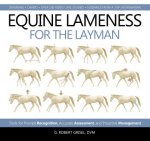
Equine Lameness for the Layman
750 Kč -

Equine Internal Medicine
1404 Kč -

Manual of Equine Reproduction
2590 Kč -

Kinesiology Taping for Horses
512 Kč -
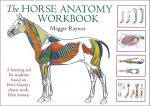
Horse Anatomy Workbook
572 Kč -

Homeopathy for Horses
1193 Kč -

Color Atlas of Veterinary Anatomy, Volume 2, The Horse
2632 Kč -

Equine Emergencies
2659 Kč -

Equine Reproductive Procedures, 2nd Edition
4631 Kč -
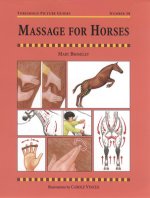
Massage for Horses
202 Kč -

Diseases of The Goat, 4e
2101 Kč -
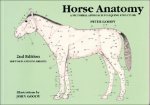
Horse Anatomy
513 Kč -

Equine Infectious Diseases
5358 Kč -

Horses in Translation
549 Kč -

Equine Internal Medicine
5651 Kč -

Saunders Equine Formulary
1689 Kč -
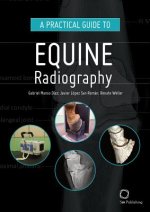
Practical Guide to Equine Radiography
3088 Kč -

Healing For Horses
677 Kč -

Diseases of Poultry
6800 Kč -
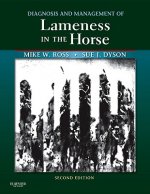
Diagnosis and Management of Lameness in the Horse
4444 Kč -

Equine Medicine, Surgery and Reproduction
2944 Kč -

Rebhun's Diseases of Dairy Cattle
4930 Kč -

Large Animal Clinical Procedures for Veterinary Technicians
3059 Kč -

Cardiology of the Horse
2942 Kč -

Clinical Radiology of the Horse, 4th Edition
6355 Kč -

Nutrient Requirements of Horses
4433 Kč -

Illustrated Guide to Equine Diseases
5086 Kč -
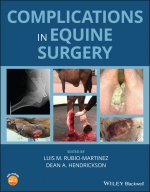
Complications in Equine Surgery
5982 Kč -

Handbook for the Sheep Clinician
2529 Kč -

Housing to Optimize Comfort, Health and Productivity of Dairy Cattles, An Issue of Veterinary Clinics of North America: Food Animal Practice
2575 Kč -

Aromatherapy for Horses
208 Kč -
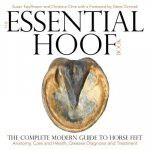
Essential Hoof Book
922 Kč -

Physical Therapy and Massage for the Horse
1160 Kč -

BSAVA Manual of Canine and Feline Dentistry and Oral Surgery, 4th edition
2914 Kč -

Language Signs and Calming Signals of Horses
1195 Kč -

Sheep, Goat, and Cervid Medicine
3911 Kč -

Equitation Science 2e
1428 Kč -

Cattle Lameness and Hoofcare
836 Kč -

Sheep and Goat Diseases
836 Kč -

Equine Applied and Clinical Nutrition
3525 Kč -

Equine Nutrition and Feeding 4e
2323 Kč -
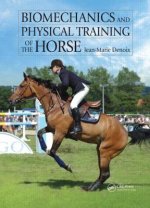
Biomechanics and Physical Training of the Horse
1682 Kč -
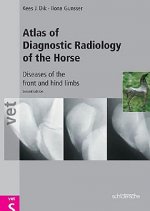
Atlas of Diagnostic Radiology of the Horse
1761 Kč -
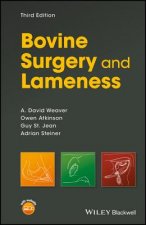
Bovine Surgery and Lameness, 3e
2253 Kč -

Bovine Pathology
5949 Kč -

Introduction to Horse Nutrition
1308 Kč -

Senior Horse
244 Kč -

Horse Conformation
735 Kč -

Veterinary Acupuncture
1724 Kč
Osobní odběr Praha, Brno a 12903 dalších
Copyright ©2008-24 nejlevnejsi-knihy.cz Všechna práva vyhrazenaSoukromíCookies


 Vrácení do měsíce
Vrácení do měsíce 571 999 099 (8-15.30h)
571 999 099 (8-15.30h)